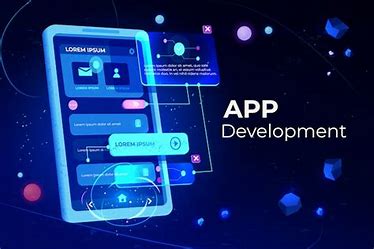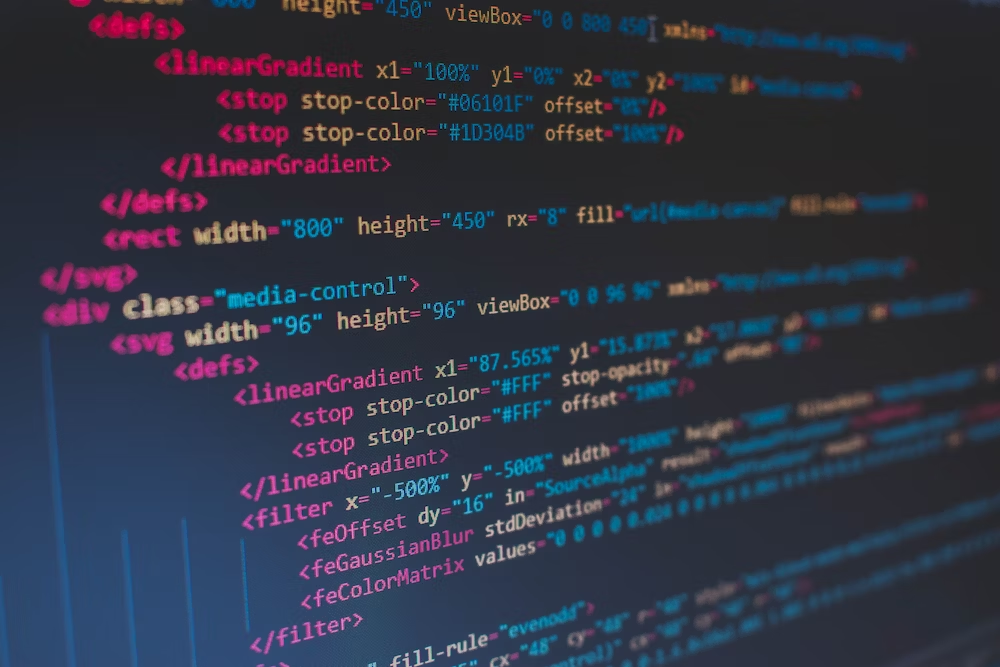
Coding is the backbone of our digital world, powering software, apps, and technology that shape our lives. Current State of Coding A. Current technologies, languages, and frameworks commonly used in coding When it comes to coding, there are several current technologies, languages, and frameworks that are commonly used. Let’s take a closer look at them:
- Technologies: The current state of coding is heavily reliant on various technologies, such as cloud computing, machine learning, and artificial intelligence.
- Languages: Some of the most commonly used programming languages in coding today include Python, JavaScript, Java, C++, and Ruby.
- Frameworks: Frameworks such as React, Angular, and Vue.js have gained popularity in recent years for front-end development, while Django and Ruby on Rails are commonly used for back-end development. B. The demand for coding skills and how it has evolved over the years The demand for coding skills has witnessed a significant evolution over the years. Here’s a closer look at how it has changed:
- Increased Demand: With the advancements in technology and the growing digital landscape, the demand for coding skills has skyrocketed.
- Diverse Applications: Coding skills are no longer limited to the IT industry. Today, coding is essential in sectors like finance, healthcare, marketing, and even the arts.
- Automation: As automation continues to reshape industries, coding skills are in high demand.
- Remote Work: The COVID-19 pandemic has accelerated the adoption of remote work.
- Growing Start-up Culture: The rise of start-ups has created a surge in demand for coding skills.
- Continuous Learning: The evolution of coding has necessitated a continuous learning mindset. Programmers must stay updated with the latest technologies, frameworks, and languages to remain competitive in the job market Artificial Intelligence and Machine Learning In recent years, Artificial Intelligence (AI) and Machine Learning (ML) have become increasingly integral to coding. The application of AI and ML in coding has revolutionized the way developers write code and has paved the way for exciting advancements in the field. In this section, we will explore the impact of AI and ML on coding and discuss the rise of automated code generation and its implications. Furthermore, we will make predictions on how AI and ML will shape the future of coding in 2024.
A. Explore the impact of AI and ML on coding
- AI and ML have simplified the coding process by automating repetitive tasks.
- Developers can use AI-powered tools to analyze code, detect bugs, and make optimizations.
- AI algorithms can learn from existing code and generate suggestions or even complete code segments.
- ML models trained on vast repositories of code can provide actionable insights and improve code quality.
- AI and ML make it possible to develop more intelligent, adaptive software systems. B. The rise of automated code generation and its implications
- Automated code generation tools leverage AI and ML to assist developers in creating code.
- These tools analyze requirements and generate code templates or even entire codebases.
- Automated code generation saves time and reduces the potential for human error.
- However, reliance on automated code generation raises concerns about code quality and security.
- Developers still play a crucial role in reviewing and maintaining the generated code.
C. How AI and ML will shape the future of coding in 2024
- AI and ML will further automate coding processes, making programming more efficient.
- Code generation tools will become smarter and provide increasingly accurate and reliable results.
- With AI assistance, developers will be able to quickly prototype and test different algorithms.
- AI-powered code review systems will assist in identifying vulnerabilities and improving security.
- Collaboration between humans and AI will be the norm, enhancing productivity and creativity. In fact, AI and ML have had a transformative impact on coding. These technologies have simplified the coding process, enhanced code quality, and opened up new possibilities for innovation. Automated code generation, fueled by AI and ML, has the potential to revolutionize how software is developed. However, it is important to consider the implications and ensure that code generated by AI is thoroughly reviewed and maintained. Looking ahead to 2024, AI and ML will continue to shape the future of coding, making it more efficient, secure, and collaborative than ever before.
Internet of Things (IoT) and Coding
The Internet of Things (IoT) refers to a network of interconnected physical devices, vehicles, buildings, and other objects that collect and exchange data. It enables devices to communicate and interact with each other, creating a smart and connected environment. The growth potential of IoT is immense, with experts predicting billions of connected devices by 2024. IoT has the power to revolutionize various industries such as healthcare, transportation, agriculture, and manufacturing. The connection between IoT devices and the need for coding skills is evident. As more devices become interconnected, the demand for coding expertise to develop, manage, and secure these devices also increases.
A. Development of IoT-specific coding languages
- IoT devices require specific coding languages to ensure efficient communication and functionality.
- Developers will need to learn and use languages such as C, Java, Python, and JavaScript to code IoT applications.
B. Increased focus on cybersecurity
- With the expansion of IoT, cybersecurity threats also increase.
- Coders will need to possess strong cybersecurity skills to protect IoT devices and the data they generate.
- There will be a rise in demand for professionals well-versed in securing IoT networks and implementing encryption algorithms.
C. Integration of AI and Machine Learning in IoT
- Artificial Intelligence (AI) and Machine Learning (ML) will play significant roles in the advancement of IoT.
- Coding will be essential to developing AI algorithms that enable devices to learn from data and make intelligent decisions.
- Programmers will need to have expertise in AI and ML to create intelligent IoT systems.
D. Edge computing and coding for low-latency
- Edge computing is gaining popularity as it reduces latency and enhances the overall efficiency of IoT systems.
- Coders will have to optimize their code to run efficiently on the edge devices and leverage their computing power.
- Programming skills focusing on low-latency and real-time data processing will be crucial.
E. Integration of blockchain technology
- Blockchain provides decentralized and secure data management, which is crucial for the integrity of IoT systems.
- Coders will need to learn blockchain programming languages, such as Solidity, to develop secure IoT applications.
- Skills in developing smart contracts and implementing blockchain-enabled IoT platforms will be in high demand. In essence, the growth of IoT will undoubtedly shape the future of coding. The development of IoT-specific coding languages, increased focus on cybersecurity, and integration of AI and Machine Learning. More so, coding for low-latency edge computing, and the integration of blockchain technology are just a few of the trends that will arise from the expansion of IoT by 2024. Coders who adapt to these trends and acquire the necessary skills will be well-positioned for success in the future of coding.

Mobile Development
In today’s digital age, mobile app development has become an essential aspect of coding practices. With the ever-increasing number of smartphone users, the demand for mobile applications continues to rise. As we look ahead to the future of coding in 2024, it is important to analyze the current state of mobile app development and explore emerging mobile technologies that will significantly impact coding practices. Let’s delve into the trends that will prevail in the realm of mobile development.
A. Analyze the current state of mobile app development
- Mobile app development has experienced tremendous growth over the past decade.
- Both iOS and Android platforms dominate the mobile app market.
- There is a significant emphasis on user experience and intuitive design in mobile apps.
- Cross-platform development frameworks like React Native and Xamarin have gained popularity.
- Security and data privacy are major concerns in mobile app development.
B. Emerging mobile technologies and their impact on coding practices
- 5G technology will revolutionize mobile app development by providing faster and more reliable connectivity.
- Augmented Reality (AR) and Virtual Reality (VR) will become mainstream in mobile applications.
- Artificial Intelligence (AI) and Machine Learning (ML) will be integrated into mobile apps for personalized experiences.
- The Internet of Things (IoT) will bridge the gap between mobile devices and connected smart home devices.
- Progressive Web Apps (PWAs) will gain traction, blurring the line between websites and mobile apps.
C. The trends in mobile development that will prevail in 2024
- Mobile app development will continue to grow exponentially as more businesses invest in mobile strategies.
- Edge computing will gain prominence, allowing faster processing and reduced latency in mobile apps.
- Voice-based interfaces and natural language processing will play a significant role in mobile app interactions.
- Mobile apps will become more personalized and context-aware through the use of AI and ML algorithms.
- Blockchain technology will enhance data security and transparency in mobile apps, especially for financial transactions. Generally, mobile app development is a crucial field in coding practices, and its significance will only continue to grow in the future. As emerging technologies reshape the mobile landscape, developers must adapt to new coding practices and harness the potential of these advancements. By staying up-to-date with the latest trends and embracing innovation, developers can ensure that their mobile apps thrive in the ever-evolving digital world. The future of mobile development in 2024 holds immense possibilities, and it is an exciting time for both developers and users alike.
Cross-Platform and Low-Code Development
As we delve into the trends for the future of coding, it becomes evident that cross-platform and low-code development will play a significant role. These approaches aim to simplify the process of creating software applications, making it more accessible to a broader audience.
A. Introduction to Cross-Platform and Low-Code Development
Cross-platform development refers to the ability to write code that can run on multiple operating systems and platforms seamlessly. This approach eliminates the need to develop separate applications for different platforms, reducing time and effort for developers. Low-code development, on the other hand, involves using visual interfaces and drag-and-drop tools to create applications with minimal coding. This method caters to individuals with limited coding experience, enabling them to develop software solutions without the need for extensive programming knowledge.
B. Advantages of Cross-Platform and Low-Code Development
- Increased Efficiency: Cross-platform development allows developers to write code once and deploy it across various platforms, saving time and resources.
- Wider Reach: By creating applications that work on multiple platforms, developers can target a larger audience and maximize the impact of their software.
- Cost Savings: With low-code development, organizations can reduce their dependency on highly skilled developers, resulting in cost savings on hiring and training.
- Rapid Prototyping: Low-code platforms facilitate quick prototyping, accelerating the development process and enabling faster time-to-market for software solutions.
- User-Friendly: The visual interfaces and intuitive tools provided by low-code platforms make application development accessible to non-technical individuals.
C. Challenges in Cross-Platform and Low-Code Development
- Performance Limitations: Cross-platform development may introduce performance overhead due to compatibility issues with different operating systems and hardware.
- Platform-Specific Features: Developing cross-platform applications might limit access to specific features available on individual platforms.
- Security Concerns: Rapid application development through low-code platforms can sometimes compromise security standards if not implemented carefully.
- Learning Curve: While low-code platforms simplify the development process, individuals still need to understand fundamental programming concepts to utilize them effectively.
- Customization Restrictions: Low-code platforms may have limitations when it comes to customization, hindering the creation of highly specialized software solutions.
D. Predicted Adoption Rate of Low-Code Development Platforms in 2024
Low-code development platforms have gained significant traction in recent years, and their adoption rate is expected to continue climbing in 2024. The simplification of application development, coupled with the scarcity of coding experts, will likely drive the demand for low-code solutions. Organizations across various industries will recognize the benefits of low-code development platforms in terms of faster time-to-market, reduced costs, and increased productivity. Moreover, as technology continues to evolve, low-code platforms will likely improve their capabilities, making them even more appealing to developers and business users. In general, cross-platform and low-code development represent key trends in the future of coding. These approaches offer advantages such as efficiency, wider reach, cost savings, rapid prototyping, and user-friendliness. However, they also present challenges such as performance limitations, platform-specific restrictions, security concerns, learning curve, and customization restrictions. Despite these challenges, low-code development platforms are expected to gain significant traction by 2024, transforming the way software applications are created and empowering individuals with varying levels of coding expertise.

Ethical Considerations in Coding
When it comes to the future of coding, ethical considerations play a crucial role in shaping the industry. Furthermore, we will discuss the importance of ethics in coding practices, address emerging concerns related to privacy, security, and bias in coding, and highlight how ethical considerations will shape the future of coding by 2024.

A. Importance of Ethics in Coding Practices
- Ethics in coding is essential as it ensures that software and technological advancements are developed responsibly.
- By following ethical practices, coders can create reliable and trustworthy systems that benefit users.
- Respecting ethical standards helps prevent malicious activities, such as hacking or unauthorized access to sensitive data.
- Furthermore, coding ethics contribute to maintaining user confidentiality and protecting their privacy.
B. Addressing Emerging Concerns in Privacy, Security, and Bias
- As technology evolves, concerns about privacy and data security continue to rise.
- Coders must consider the ethical implications of collecting, storing, and using personal information.
- Strict protocols and safeguards should be implemented to protect user data from breaches and unauthorized access.
- In addition to privacy and security, bias in coding has gained attention in recent years.
- Unconscious biases present in algorithms can lead to discriminatory outcomes.
- Awareness of these biases is crucial, and efforts to mitigate and eliminate bias in coding must be prioritized.
C. The Future of Coding: Ethical Considerations
- By 2024, ethical considerations will significantly shape the future of coding.
- Strict regulations and policies will be implemented to ensure ethical standards are met in software development.
- Coders will be required to undergo ethical training to understand the potential consequences of their code.
- Companies will be held accountable for any ethical violations related to their coding practices.
- Transparency will become essential as users demand to know how their data is being collected, stored, and utilized.
- Collaboration between coders, policymakers, and ethicists will be encouraged to create responsible coding standards. Basically, ethics in coding practices are of utmost importance to ensure the responsible development of technology. Addressing emerging concerns related to privacy, security, and bias is essential for creating trustworthy and fair systems. By 2024, ethical considerations will play a significant role in shaping the future of coding, with strict regulations, required ethical training, and increased transparency becoming the norm. It is crucial that the coding community embraces these ethical considerations to build a more inclusive and responsible technological landscape.
Conclusion
So far, we have explored the future trends of coding in 2024. We discussed the importance of artificial intelligence and machine learning, the rise of low-code and no-code platforms, and the dominance of open-source technologies. It is clear that continuous learning and adaptability will be critical for success in the coding field. As technology rapidly evolves, coders need to stay updated with the latest tools and languages. They should be open to learning new concepts and embracing emerging trends. To thrive in the coding career of 2024, it is essential to leverage the predicted trends. Embracing artificial intelligence and machine learning can enhance efficiency and productivity. Exploring low-code and no-code platforms can provide a competitive edge. Engaging with open-source technologies can foster collaboration and innovation. In a nutshell, the future of coding is exciting and full of opportunities. By continuously learning and adapting to the changing technological landscape, coders can ensure a successful career. It is crucial to stay ahead of the curve by embracing the predicted trends and leveraging them to their advantage. So, let’s gear up and embrace the future of coding in 2024!





